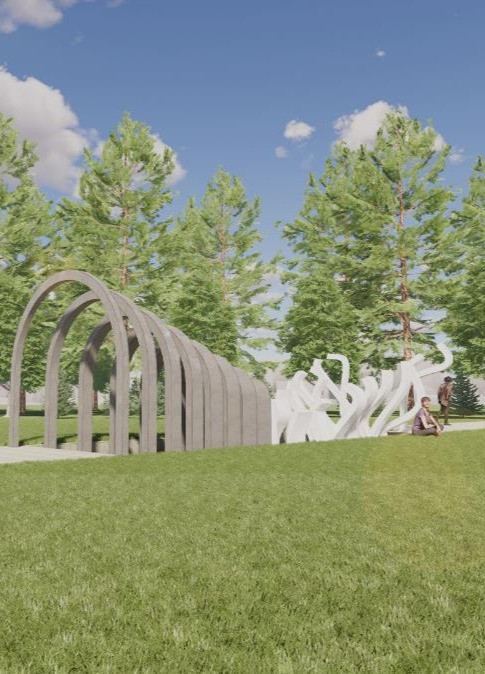5 key facts about this project
The Decision Point serves as a thoughtful space designed to engage visitors in a reflection on humanity's moral and ethical journey. Positioned within a memorial setting, the design aims to connect the past with a vision for a hopeful future. It highlights themes of justice and the inherent value of human life. The overall concept expresses an abstract representation of the decision-making processes that shape our society.
Concept and Narrative
The main focus of the design is the idea of a decision point, which encourages visitors to confront the realities of historical actions. As people move through the space, they experience a narrative that brings to light the burden of guilt associated with past wrongs. This emotional path leads them to the Scar in the Earth, a key feature that symbolizes both the acknowledgment of harm done and the commitment to change for the better.
Spatial Experience
A series of panels creates a journey from darkness to light. These panels act as guides, helping to convey the story. They contrast experiences of past neglect with a desire for a fairer future. Each element in the space invites visitors to reflect, encouraging them to think about their own views on justice and humanity. The arrangement of these components creates a strong bond between the narrative and the experience within the environment.
Unique Features
The Scar in the Earth stands out as a crucial aspect of the design. It serves as a physical representation of the project's main idea. This feature highlights a moment of reflection, inviting individuals to consider the weight of their choices. Its incorporation into the design underscores the aim of fostering an understanding of how past actions shape future responsibilities, adding depth to the memorial space.
Light plays an essential role in the experience, enhancing the emotional landscape. Natural light filtering through the space changes the atmosphere, showing the transition from past struggles to brighter possibilities. This effect not only emphasizes the design's themes but also allows visitors to engage deeply with the space and reflect on their own experiences and choices.






















































